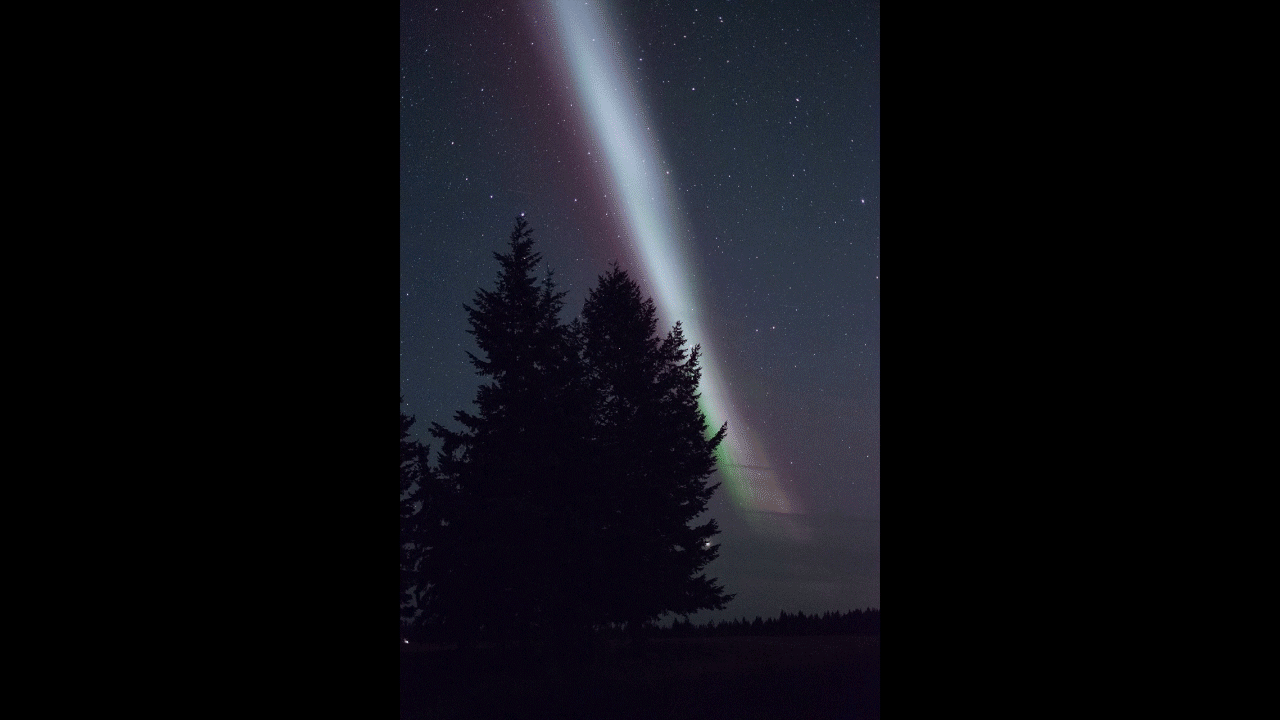
The aurora structure known as "Steve" shimmers over Helena Lake Ranch, British Columbia in Canada in this image by Andy Witteman. (Andy Witteman - @CNLastro)
A group of citizen scientists helped to discover a new type of aurora they named "Steve," and now NASA wants your help photographing the unusual phenomenon.
Members of a Facebook group known as the Alberta Aurora Chasers originally documented the aurora-like light show in the night skies over western Canada. Unlike other auroras, the phenomenon (which scientists have turned into an acronym: Strong Thermal Emission Velocity Enhancement) appears as a distinct purple ribbon of light with green "picket fence" accents. STEVE occurs at lower latitudes than most of the northern lights, according to a statement from NASA.
Using the European Space Agency's Swarm magnetic field mission, researchers were able to study STEVE in greater detail, revealing new clues about the interactions of Earth's magnetic field and upper atmosphere that cause the phenomenon. Their findings were published yesterday (March 14) in the journal Science Advances. [Amazing Auroras: Photos of Earth's Northern Lights]
Now, a citizen science project called Aurorasaurus, which is funded by NASA and the U.S. National Science Foundation, is seeking skywatchers' help to learn even more about STEVE's appearance, life cycle and implications. People from around the world can report where they have seen auroras, including STEVE, and post photos online or using the Aurorasaurus mobile app.
More From Space.com
Since its discovery, STEVE has been documented in the United Kingdom, Canada, Alaska, the northern United States and New Zealand.
To help citizens observe STEVE, NASA provides some basic skywatching tips: For starters, this phenomenon appears between 5 and 10 degrees farther south in the Northern Hemisphere, compared to other auroras. The ribbon of mostly purple light is a very narrow arc that is aligned east-west and extends for hundreds or thousands of miles, according to the NASA statement.
Occasionally, a rapidly evolving, green "picket fence" structure accompanies STEVE. While the green accent-lights are short-lived, STEVE can last 20 minutes to an hour. Also, the phenomenon has been documented only in concurrence with a normal aurora — which is why scientists need your help to learn more about how the two phenomena are connected.
Furthermore, the appearance of STEVE may be limited to certain seasons. "It was not observed from October 2016 to February 2017. It also hasn't been seen from October 2017 to the present, March 2018," NASA officials said in the statement. (However, NASA's Elizabeth MacDonald, a researcher at Goddard Space Flight Center in Maryland, told Space.com the phenomenon was just spotted again the night of March 10.)
Skywatchers who want to get involved can report sightings of STEVE and other auroras using Aurorasaurus.
Editor's note: If you captured an amazing photo of STEVE or any other night sky sight, and would like to share it with Space.com for a story or gallery, send images and comments to managing editor Tariq Malik at spacephotos@space.com.
Original article on Space.com.
